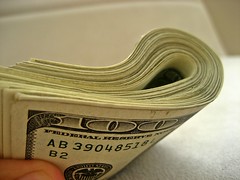 There have been some conflicting studies in the news recently that talk about health care spending. It turns out that a small group of people, who are the least healthy, are the ones who spent the largest portion of the money that was spent on health care. These results seem to match up well with what common sense would tell you.
There have been some conflicting studies in the news recently that talk about health care spending. It turns out that a small group of people, who are the least healthy, are the ones who spent the largest portion of the money that was spent on health care. These results seem to match up well with what common sense would tell you.
Recently, the federal government released a report that said that the United States spent $2.6 trillion on health care in 2010. The report said that this number translated out to be around $8,400 spent per person on health care.
To me, this sounds a bit strange. I don’t have health insurance, so I am very careful about what I spend on health care. If you added everything up, I have my doubts that the total amount I spent on health care in 2010 would be over $8,000.
I guess I wasn’t the only one who had questions about that number. Researchers from the Agency for Healthcare Research and Quality did a study where they took a closer look at the way that people actually spend money on health care. They found that it isn’t entirely accurate to suggest that each and every American spent over $8,400 on health care in 2010.
Instead, what was really happening was that a small group of Americans were the ones who were spending the largest portion of what was spent on health care every year. Just 5% of the population ends up spending more than half of the total amount of what is spent on health care in a given year.
It may come as no surprise to learn that the group of top spenders are made up of the people who are the sickest. In other words, the people who have the most serious health issues end up spending the most on health care. The researchers also found that the people who were spending the most tended to be elderly, female, white, and covered by public health insurance.
What about the group that was not made up of the top spenders? The people in this group tended to self-report that they were in good or excellent health. They also were younger, and more likely to be Hispanic, or African-American.
What do these results mean? It means that one cannot simply divide the number of Americans by the amount of money spent on health care, and assume that this is what each person spent on health care in a given year. It also suggests that there are people who have health insurance, but who are not using it very much. Or, another implication is that there are a lot of people who don’t have health insurance, and therefore, are avoiding spending money on health care. They can’t afford it.
Image by 401K on Flickr

